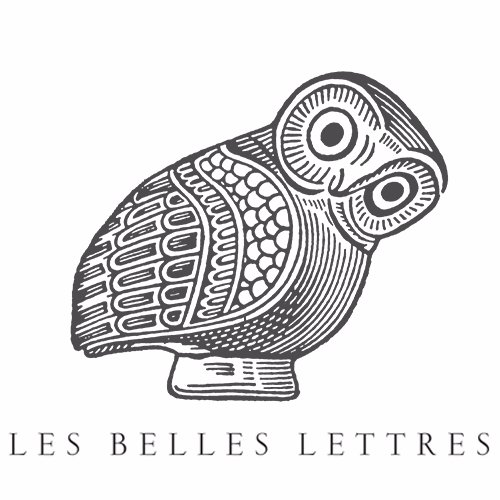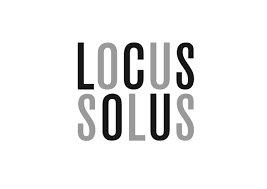Annuaire d' éditeur / Yellow Now
Yellow Now: contact et modalités de dépôt d'un manuscrit
Maison d'édition à compte d'éditeur crée en 1972
À l’origine de Yellow Now, il y a Yellow, une galerie d’art installée fin 1969 au 46 en Roture, à Liège, à l’initiative de Guy Jungblut. La première exposition est consacrée à Jacques Lizène, petit maître liégeois de la deuxième moitié du XXe siècle et parangon, à son corps fendant, de l’art médiocre. C’était un assez bon début.
La galerie entendait promouvoir des artistes qui s’écartaient des supports traditionnels et exploraient la photographie, le livre, le cinéma, la vidéo (qui n’était encore que balbutiante). Elle exposera Ben, Nyst, Annette Messager, les Leisgen, Gerz, les Poirier, Gette, Charlier… En 1971, elle organise la première manifestation d’art vidéo en Belgique : Propositions d’artistes pour un circuit fermé de télévision.
En 1973, un premier « livre d’artiste » : Annette Messager, Mes clichés-témoins, se trouve à l’origine des éditions Yellow Now. Deux ans plus tard, dans l’indifférence, la galerie met la clé sous le pavé et Guy Jungblut entreprend de se consacrer essentiellement à l’édition : Bay, Gerz, Gette, Le Gac, Poirier, Nyst, Ransonnet, Lennep, Fernie – bref, quinze années d’édition de livres d’artistes.
À partir de 1988, sous l’impulsion de Patrick Leboutte, les éditions s’orientent vers le cinéma, avec d’abord la collection Long Métrage (dix-neuf titres : des Vacances de M. Hulot de Tati au Traité de bave et d’éternité d’Isidore Isou), que suivra dès 1990 une étroite collaboration avec la Cinémathèque française (notamment pour l’édition des dix-huit premiers numéros de la revue Cinémathèque, avec Dominique Païni). D’autres collections s’attachent à des réalisateurs peu diffusés, plus difficiles ou plus rares (Banlieues, dirigée par Charles Tatum, Jr : Freda, Trauberg, le Serial américain…) ou à des essais incisifs (De parti pris : Cinégénie de la bicyclette, Eloge de la pornographie, ou plus osé encore : Pour le cinéma moderne). Des collaborations s’ébauchent encore avec différents festivals de cinéma (Locarno, Dunkerque : une belle diagonale pour une course que l’on aurait encore osé appeler, à l’époque, cycliste !). Dans cette veine – et probablement parce que le titre contient la racine cyclo – plusieurs encyclopédies seront coproduites : Une encyclopédie des cinémas de Belgique (avec le musée d’Art moderne de la Ville de Paris), Une encyclopédie du nu au cinéma (avec Le Studio 43 de Dunkerque, la Coursive de La Rochelle, Le Volcan du Havre…) et la plus récente, parue en 2004 : Une encyclopédie du court métrage français (avec le Festival Côté court de Pantin).
Au milieu des années 90 : après une brève période de molle turbulence (due partiellement à une énième faillite de distributeur – il y en aura une dizaine en tout) et de ralentissement des parutions (période propice à la réflexion et à la redéfinition des collections), le vélo ivre reprend son rythme de croisière. Yellow Now dessine depuis 2000, avec la collaboration d’Emmanuel d’Autreppe, une géométrie du hasard la plus irrégulière possible, une roue pentagonale faite de cinq collections, cinq côtés, plus ou moins proportionnels aux carrés de l’hypoténuse de l’âge de leurs capitaines : Côté cinéma, Côté films, Côté photo, Côté arts : quatre lignes de force (la cinquième est au fond de l’escalier). Le « côté cinéma » s’ouvre à la diversité des genres : recueils de textes critiques (Philippe Arnaud, Alain Philipon, André S. Labarthe, Noël Godin…), écrits de cinéastes (Marcel Hanoun, Glauber Rocha), monographies (sur Storck, sur Monteiro, sur Ulmer), essais singuliers (le Palimpseste noir de Dick Tomasovic, sur le cinéma américain contemporain). Avec l’aide de Fabrice Revault d’Allonnes et de Marcos Uzal, le « côté films » reprend, prolonge et rafraîchit le concept de l’ancienne collection Long Métrage (Monika de Bergman, Vaudou de Ulmer, The Reflecting Pool de Viola, Sayat Nova de Paradjanov, Mulholland Drive de Lynch…). Enfin, les collections s’ouvrent, on l’a dit, bien plus largement qu’auparavant à la photographie (Pierart, Plossu, Claass, un essai de Clément Chéroux sur la photographie ratée, pas mal de « premiers livres » de photographes) et aux autres arts, plastiques ou moins plastiques. Le côté « côté » indique bien sûr des contours flous et des débordements possibles, voire souhaités. Quand ça déborde vraiment trop, une collection hors collection (la cinquième fesse du dé : « à côté ») est là pour recueillir les épanchements encombrants mais dont on ne voudrait pas se priver : livres d’artiste comme au bon vieux temps, catalogues d’exposition, collaborations honteusement opportunistes, fonds de tiroir à pépites multiples, accès de fièvre monomaniaques, incontinences et logorrhées.
Aux dernières nouvelles, il semble ressortir, de discussions régulières entre quatre zyeux et même davantage lorsque les circonstances s’y prêtent, que Yellow Now entend bien continuer, et que personne jusque-là n’ait été contrôlé positif dans l’équipe. Touchons de la pierre – dont on fait les menhirs – , et du bois – dont on fait les pipes.
Emmanuel d’Autreppe
La galerie entendait promouvoir des artistes qui s’écartaient des supports traditionnels et exploraient la photographie, le livre, le cinéma, la vidéo (qui n’était encore que balbutiante). Elle exposera Ben, Nyst, Annette Messager, les Leisgen, Gerz, les Poirier, Gette, Charlier… En 1971, elle organise la première manifestation d’art vidéo en Belgique : Propositions d’artistes pour un circuit fermé de télévision.
En 1973, un premier « livre d’artiste » : Annette Messager, Mes clichés-témoins, se trouve à l’origine des éditions Yellow Now. Deux ans plus tard, dans l’indifférence, la galerie met la clé sous le pavé et Guy Jungblut entreprend de se consacrer essentiellement à l’édition : Bay, Gerz, Gette, Le Gac, Poirier, Nyst, Ransonnet, Lennep, Fernie – bref, quinze années d’édition de livres d’artistes.
À partir de 1988, sous l’impulsion de Patrick Leboutte, les éditions s’orientent vers le cinéma, avec d’abord la collection Long Métrage (dix-neuf titres : des Vacances de M. Hulot de Tati au Traité de bave et d’éternité d’Isidore Isou), que suivra dès 1990 une étroite collaboration avec la Cinémathèque française (notamment pour l’édition des dix-huit premiers numéros de la revue Cinémathèque, avec Dominique Païni). D’autres collections s’attachent à des réalisateurs peu diffusés, plus difficiles ou plus rares (Banlieues, dirigée par Charles Tatum, Jr : Freda, Trauberg, le Serial américain…) ou à des essais incisifs (De parti pris : Cinégénie de la bicyclette, Eloge de la pornographie, ou plus osé encore : Pour le cinéma moderne). Des collaborations s’ébauchent encore avec différents festivals de cinéma (Locarno, Dunkerque : une belle diagonale pour une course que l’on aurait encore osé appeler, à l’époque, cycliste !). Dans cette veine – et probablement parce que le titre contient la racine cyclo – plusieurs encyclopédies seront coproduites : Une encyclopédie des cinémas de Belgique (avec le musée d’Art moderne de la Ville de Paris), Une encyclopédie du nu au cinéma (avec Le Studio 43 de Dunkerque, la Coursive de La Rochelle, Le Volcan du Havre…) et la plus récente, parue en 2004 : Une encyclopédie du court métrage français (avec le Festival Côté court de Pantin).
Au milieu des années 90 : après une brève période de molle turbulence (due partiellement à une énième faillite de distributeur – il y en aura une dizaine en tout) et de ralentissement des parutions (période propice à la réflexion et à la redéfinition des collections), le vélo ivre reprend son rythme de croisière. Yellow Now dessine depuis 2000, avec la collaboration d’Emmanuel d’Autreppe, une géométrie du hasard la plus irrégulière possible, une roue pentagonale faite de cinq collections, cinq côtés, plus ou moins proportionnels aux carrés de l’hypoténuse de l’âge de leurs capitaines : Côté cinéma, Côté films, Côté photo, Côté arts : quatre lignes de force (la cinquième est au fond de l’escalier). Le « côté cinéma » s’ouvre à la diversité des genres : recueils de textes critiques (Philippe Arnaud, Alain Philipon, André S. Labarthe, Noël Godin…), écrits de cinéastes (Marcel Hanoun, Glauber Rocha), monographies (sur Storck, sur Monteiro, sur Ulmer), essais singuliers (le Palimpseste noir de Dick Tomasovic, sur le cinéma américain contemporain). Avec l’aide de Fabrice Revault d’Allonnes et de Marcos Uzal, le « côté films » reprend, prolonge et rafraîchit le concept de l’ancienne collection Long Métrage (Monika de Bergman, Vaudou de Ulmer, The Reflecting Pool de Viola, Sayat Nova de Paradjanov, Mulholland Drive de Lynch…). Enfin, les collections s’ouvrent, on l’a dit, bien plus largement qu’auparavant à la photographie (Pierart, Plossu, Claass, un essai de Clément Chéroux sur la photographie ratée, pas mal de « premiers livres » de photographes) et aux autres arts, plastiques ou moins plastiques. Le côté « côté » indique bien sûr des contours flous et des débordements possibles, voire souhaités. Quand ça déborde vraiment trop, une collection hors collection (la cinquième fesse du dé : « à côté ») est là pour recueillir les épanchements encombrants mais dont on ne voudrait pas se priver : livres d’artiste comme au bon vieux temps, catalogues d’exposition, collaborations honteusement opportunistes, fonds de tiroir à pépites multiples, accès de fièvre monomaniaques, incontinences et logorrhées.
Aux dernières nouvelles, il semble ressortir, de discussions régulières entre quatre zyeux et même davantage lorsque les circonstances s’y prêtent, que Yellow Now entend bien continuer, et que personne jusque-là n’ait été contrôlé positif dans l’équipe. Touchons de la pierre – dont on fait les menhirs – , et du bois – dont on fait les pipes.
Emmanuel d’Autreppe
Contact
Site Web
http://www.yellownow.be/Adresse
15, rue François Gilon, 4367 Crisnée BelgiquePartenaires
Distributeur

Les Belles Lettres
Diffuseur
Les Belles Lettres
Maisons d'éditions similaires :
Pour écrire un commentaire, connectez-vous.



